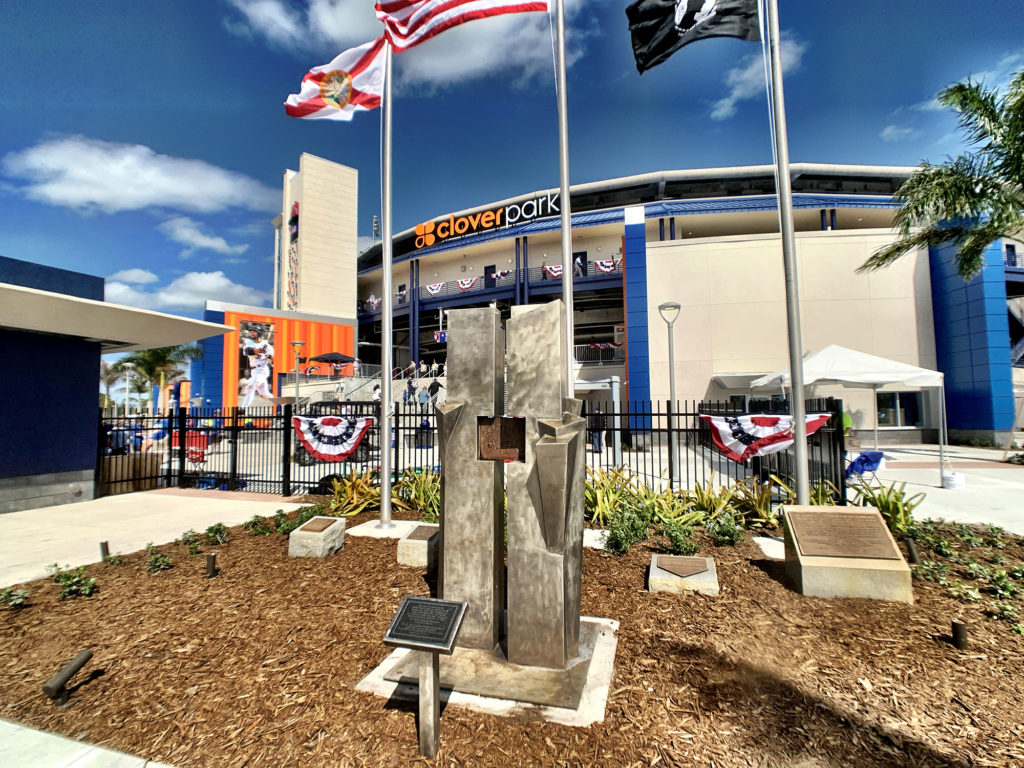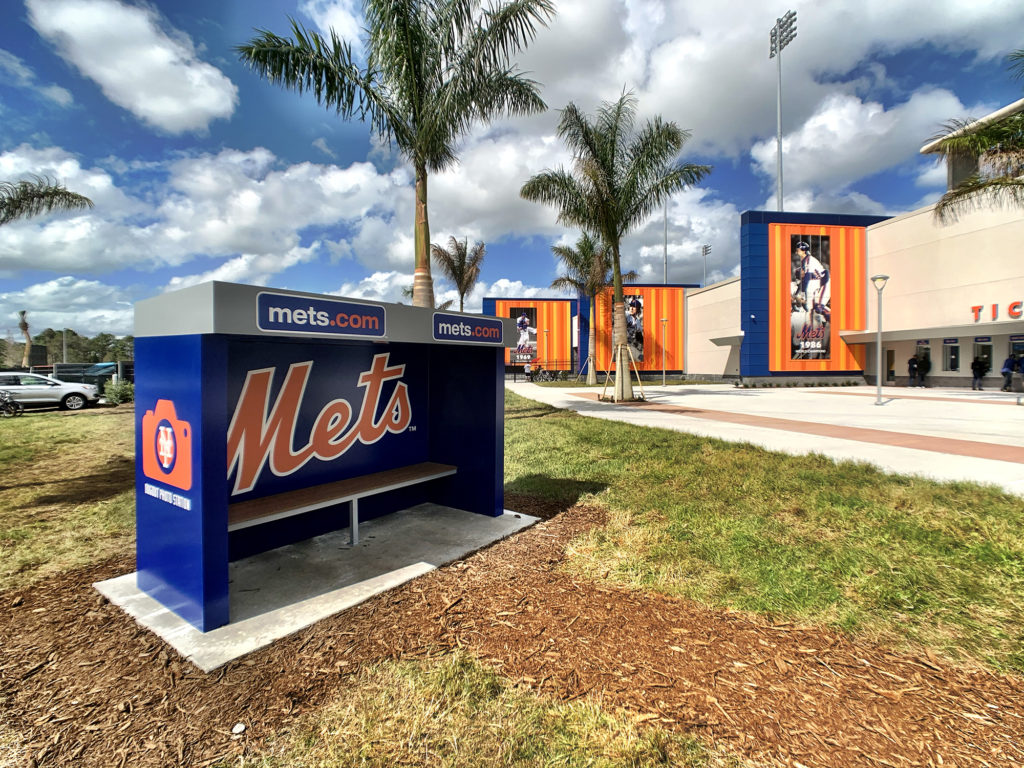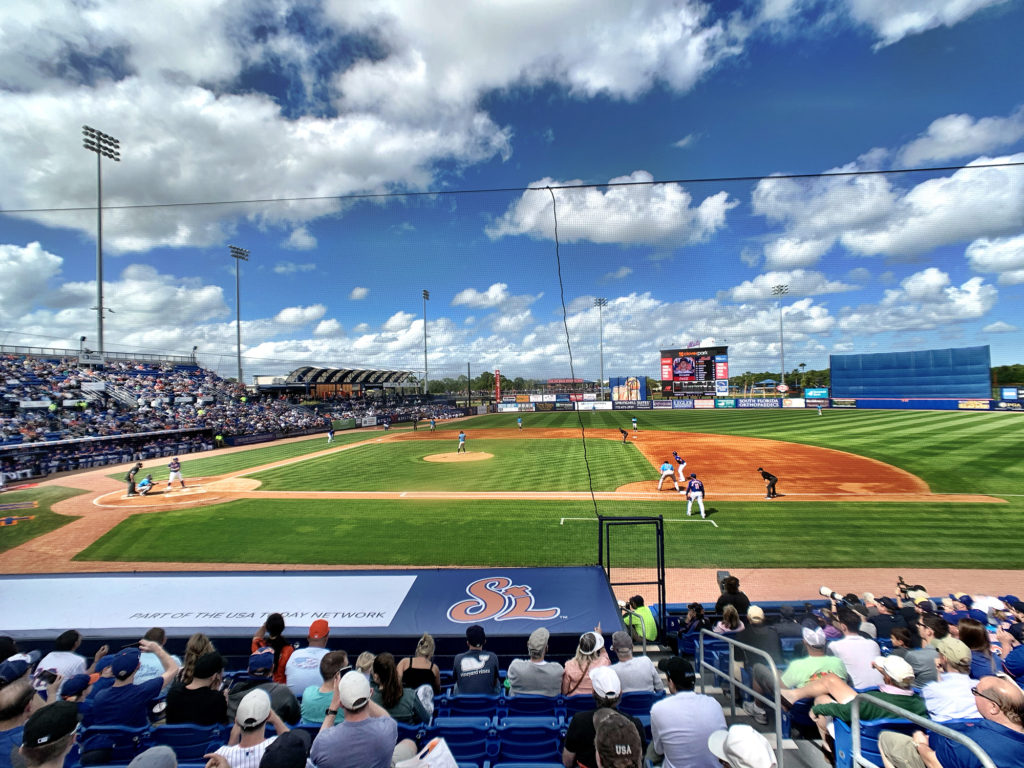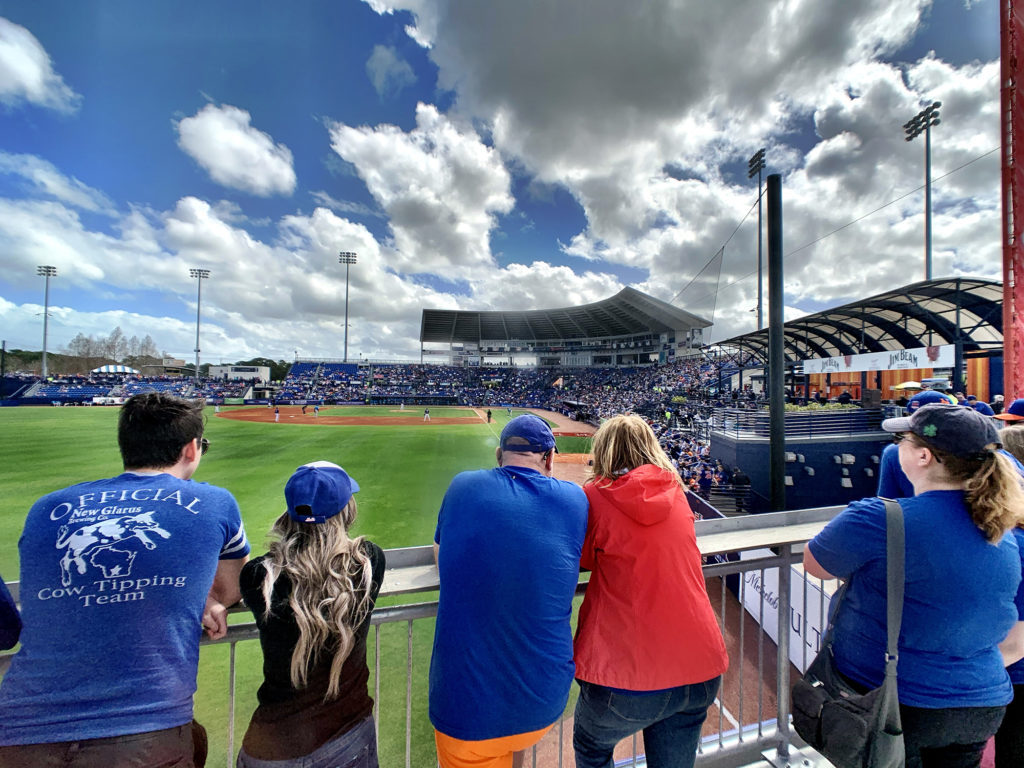With a new exterior, a cheerier color scheme, upgraded player facilities and expanded fan spaces, Clover Park was unveiled Saturday by the New York Mets to a boisterous, happy crowd in Port St. Lucie.
The spring home of the Mets since 1988, the former Thomas J. White Stadium / Tradition Field / Digital Domain Park / Mets Stadium / First Data Field has undergone several renovations in recent years, including the addition of a right-field party deck, a left-field Tiki bar and new exterior signage. Despite the plethora of ballpark names, the Mets have been stable on the spring-training front, with only two homes since 1962 expansion placed the team in the National League: St. Petersburg’s Al Lang Field (1962-1987) and Clover Park (1987-present). This sort of stability is rare in spring training; only the Detroit Tigers and Pittsburgh Pirates have trained for longer in their current Grapefruit League ballparks.
The length of the team’s tenure, however, led to an unfortunate side effect: upgrades to the facility were few and far between. Changes over the years were relatively modest: a new Tiki bar down the third-base line, a new party deck and bar in right field, an upgrade of the outfield berm, and a new exterior façade that never really fit in with the rest of the ballpark. There was still plenty to love in the ballpark—the huge grandstand canopy provides plenty of shade, and the bucolic nature of the surrounding area is the epitome of the spring-training ethos.
With the lease up, the Mets and St. Lucie County embarked on a $57-million renovation to Clover Park, with improvements both on the fan side and on the player side, and plenty of overlap between both. We toured the renovated facility with EwingCole President Bob McConnell and EwingCole Principal Craig J. Schmitt, co-director of the firm’s sports practice.
A major change will be noticeable upon entry to the ballpark: the concourse has been expanded and a totally new front exterior installed. The new color scheme dumps the blue of old and instead employs a lighter palette centered on the team’s familiar orange and blue look. Combined with plenty of Mets branding, the new entry plaza is an inviting space with new selfie spots (including a scaled-down dugout and an oversized Adirondack chair) and more security lines, while retaining and moving the 9/11 tribute previously installed outside the ballpark. The parking lot has also been reconfigured with a dedicated turn lane off Peacock Boulevard, making for easier access before a game.
The changes also include new ticket booths and new security points, both of which should streamline ballpark entry. Once fans pass security, they’ll encounter a new concourse that more than triples the width of the old, narrow rat maze of a concourse. A dead end to the concourse down the first-base line has been blown out, allowing fans to go directly from the grandstand to the right-field party deck and berm without walking through the ballpark seating and blocking the views of other fans.
With the expanded concourse comes some major changes. Interestingly, the new space only includes one new fixed concession stand: there are some portables set up for now, but the Mets are waiting to see how traffic patterns play out before deciding on additional points of sale. In the meantime, the space is an inviting area to hang out away from the seating bowl, with plenty of murals celebrating Mets history. And the branding extends throughout the ballpark, inside and out: for example, a new graphic band on the press-level fascia displays the history of all the Mets logos used over the years: Mr. Met, Mrs. Met and more.
“It’s really heavy on the branding—that’s something the Mets wanted to do,” Schmitt said.
It’s also a more open space, McConnell said, because of new and expanded vomitories allowing for better fan access to the seating bowl.
The interior ballpark upgrades extend down the third-base line. The old Tiki bar behind third base is now gone, replaced by a new Jim Beam Bourbon Bar beyond left field. That gives the Mets social spaces down each line where the emphasis is hanging out with friends, not necessarily being glued to the action. That means lots of drink rails, along with some tables.
“We always say you can never have too many drink rails,” Schmitt said, pointing out they were installed on both sides of the bar. The bar is larger than the old Tiki bar, albeit with no seats. The deck also has two points of sale with ballpark staples like hot dogs, burgers and pretzels.
“I think the hope is that becomes like a scene at Frenchy’s [at Spectrum Field, spring home of the Phillies in Clearwater]—everyone wants to hang out there,” Schmitt said. “We planned plenty of space so they could set up a little band if they wanted to have it pre- or post-game.”
The deck, by the way provides a great view of the player-development side of the complex.
Which leads us to the second part of the ballpark renovations, albeit a part that most fans won’t see. This includes an expanded home clubhouse (larger than the Citi Field clubhouse), new practice fields, more batting cages and a better layout for fan access to practices.
All the MLB practice fields are next to ballpark, with the new weight room and expanded clubhouse behind it in the concourse. A synthetic turf workout field now sits next to the grandstand, along with hitting tunnels. The major-league fields are closest to the ballpark deck, with one major-league and one minor-league bunting field adjacent, and minor league fields beyond. The practice fields were realigned to be closer to fans, with a new central viewing area for major-league workouts. Fans go behind the ballpark to a new sidewalk past right field to enter both the major-league and minor-league fields. Previously, access to player workouts came via a pathway through the woods next to Peacock Boulevard.
“We’ve created a much more beautifully landscaped path that goes around the back and comes out the workout fields,” Schmitt said. That pathway then leads to a pinwheel of practice fields.
“All the chain-link fencing throughout the whole complex was the old galvanized fencing. It was 15 years old and rusty and gross,” Schmitt said. “The Mets said they want this place to look consistently clean and fresh.” In the end, all-new back chain-link fencing was installed, and existing structures were repainted. “The whole campus now has this consistent look to it,” Schmitt added.
That consistent look, he added, was key to the new fan experience at Clover Park. “This morning we were standing at the entry gates before the crowds were let in, and someone said, the place just feels happy now with all the orange and blue and everything’s bright,” Schmitt said. “You know what, that’s a really great comment. It feels happy. Isn’t that what spring training is all about?”
This article first appeared in the Ballpark Digest newsletter. Are you a subscriber? It’s free, and you’ll see features like this before they appear on the Web. Go here to subscribe to the Ballpark Digest newsletter.






